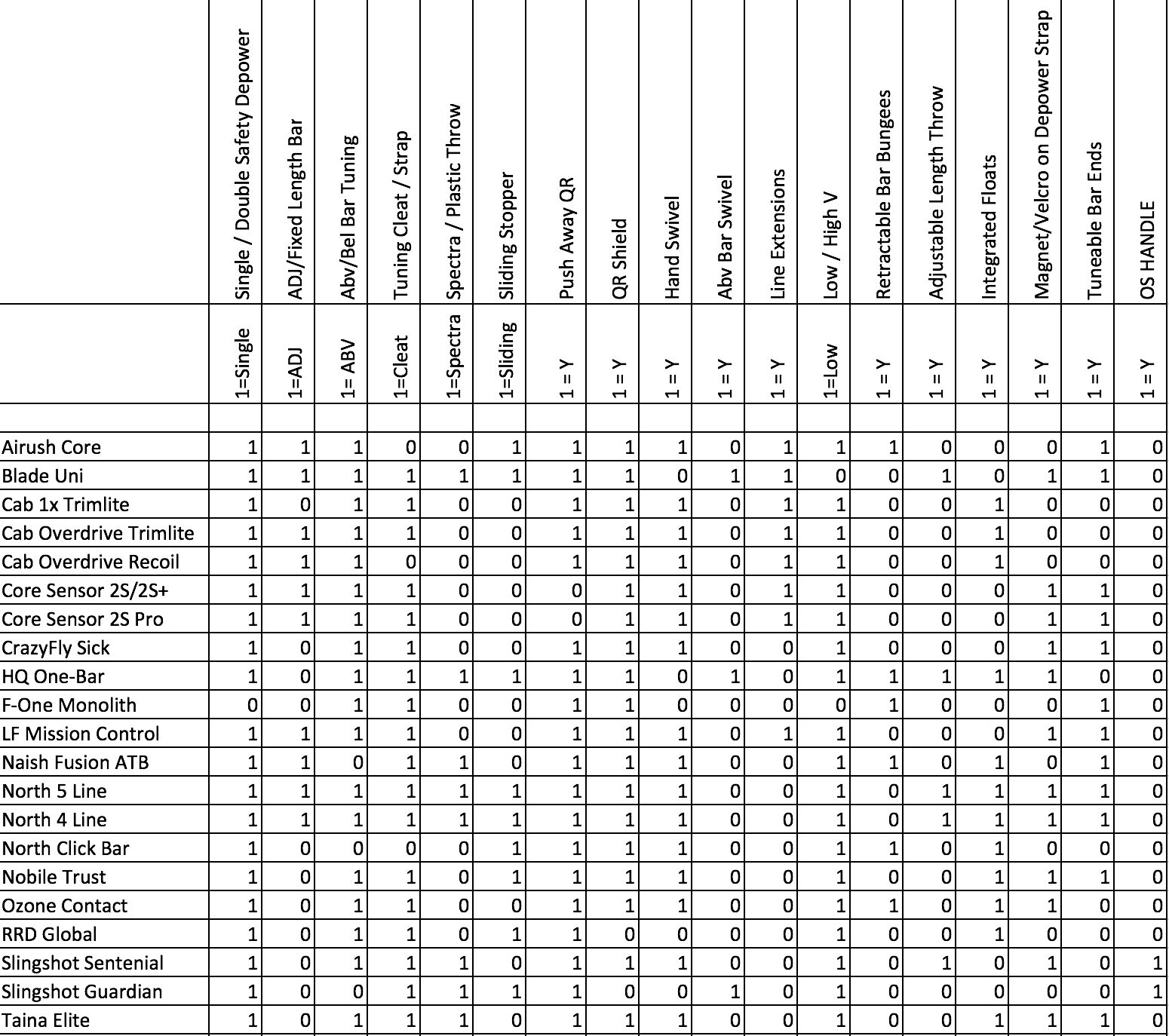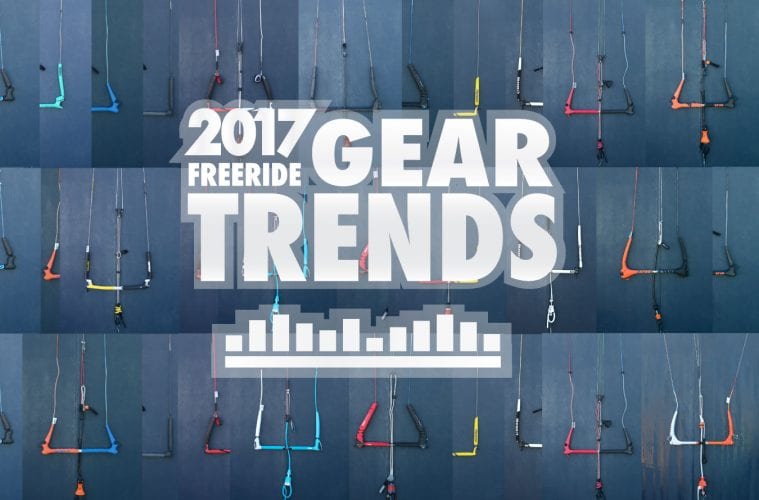This year the TKB Testing Team headed down to La Ventana and unpacked and rigged over 32 different kite models. Despite the broad range in features and function, there are a number of common design approaches that kite brands use to meet the needs of a diverse kiting population. Below is a breakdown of common design features that the brands we tested chose to integrate into their bars. 
TYPE OF SAFETY SYTEM
Safety systems generally come in two sorts, single or double depower. In a single center-line safety depower system, activation of the quick release causes the kite leash to flag/depower the kite along a single center line. In a double center-line safety depower system, the quick release flags the kite along the two center lines.
BAR LENGTH
Control bars can either come in fixed length or adjustable lengths for a one bar fits all approach.
ABOVE VS. BELOW BAR TUNING
Above bar tuning puts the controls at or above the rider’s eye level and allows them to use the natural leverage of pulling down for adjustment whereas below bar tuning ensures that the tuning controls are always within reach regardless of the bar’s length of throw.
CLEAT VS. STRAP
Tuning systems come in either a simple clam cleat configuration or a strap setup with two separate controls for powering up or down. Each have their critics, cleats can be hard to use under tension and straps can be confusing and hard to control the amount of adjustment.
THROW LINE
Throw lines are either plastic or spectra(rope). Plastic coated sheeting/throw lines are durable and require little to no maintenance compared to spectra/rope sheeting/throw lines.
SLIDING STOPPER
Bars equipped with a sliding stopper allow riders to sheet the kite in to a fixed point without having to pull against the bar pressure of the kite. Sliding stoppers also serve to limit the length of throw on longer throw bars or help keep the bar close for smaller riders with shorter reach.
QUICK RELEASE MECHANISM
The most common type of quick release mechanism in use today is the push away handle release. To initiate the safety system the rider grabs the below the bar quick release handle and pushes it away from his/her body. However another version of the quick release has been introduced with a twisting QR.
QUICK RELEASE SHIELD
Many push away quick releases have a shield built into the design to protect the travel of the quick release handle from the bar. In the event of a rare tangled bar, the bar may be pushed down against the quick release and without a shield this will prevent the rider from releasing the system.
CENTER LINE SWIVEL
Below the bar hand swivels make it easy for riders to manually untwist center line rotations by hand.
ABOVE BAR SWIVEL
Some bars use an above bar swivel to help manage twists in the center lines after rotating freestyle moves.
LINE EXTENSIONS
Some bars come with line extensions which can be removed to allow you to shorten your overall line length by a couple meters. Adjusting your line lengths allows you to customize the length of your power stroke and kite response but also adds the extra bulk of connectors when the extensions are attached.
LOW VS. HIGH V
At some point the two center lines that support the front of the leading edge have to split as they approach the bar. A low V is where those lines split within the rider’s reach just above the tuning mechanism and a high V is where that split occurs much closer to the kite
RETRACTABLE BAR BUNGEES
Retractable bar bungees are very convenient because they stay out of the way during riding and while winding your lines, but once you have your lines completely secured you can pull the bungees out to secure your lines for tangle free rigging next time.
ADJUSTABLE LENGTH THROW
Some bars feature an adjustable length throw in which the rider can adjust the position of the above the bar tuning so as to either shorten the throw or lengthen it significantly; a sliding stopper typically shortens throw but doesn’t change the position of the tuning controls. Some bars are designed to allow the rider to change the positioning of the tuning controls without affecting the tuning of the kite. This may prove useful to different sized riders sharing the same bar or riders who desire extra long travel throw in the surf and shorter throw for unhooked freestyle.
INTEGRATED FLOATS
Some bars integrate the floats into the bar end with a molded single piece foam that serves the function of both flotation and a softer/larger surface area to grab extra tension on an outside line. Integrated bar ends tend to be easier to wind onto the bar at the end of the day compared to loose hanging foam floats.
TUNABLE BAR ENDS
In the last couple years there has been a lot of innovation in tunable bar ends where the rider can make adjustments to the length of the outside lines to compensate for line stretch or different tuning preferences. Some bars have a hidden tuning option within the bar end, some have a series of knots under the floats, and others have a series of knots on the leader lines where the flying lines attach.
OS HANDLE
OS Handles were once very common on the outside lines of most bars and allowed the rider to flag/depower the kite by first initiating the quick release and then grabbing a handle attached to a single line that would force all other lines to go slack and depower the kite.


